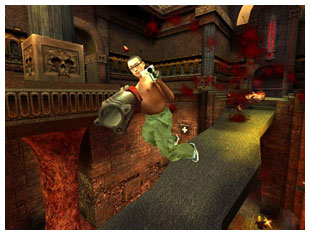… of dollars.
From this Yahoo/AP press release:
Game publishers have to recognize that there are millions, if not billions, of dollars in advertising money coming their way in the next few years,” said Justin Townsend, chief executive of IGA Partners Europe, an agency that places in-game ads for clients.
…
Until very recently, advertisers weren’t rushing to place products in video games. They spent only $34 million in 2004 on in-game ads – a far cry from the billions spent on television advertising.
But that amount is expected to explode to $562 million by 2009, according to The Yankee Group research firm. Including “advergames” – games built solely to promote a product – game advertising will approach $1 billion by the end of the decade, the firm predicts.
which is essentially the same thing written in today’s Wired online article. Maybe it’s not “Want a Coke With That Railgun?”. Maybe instead it’s “You Need a Coke to Power That Railgun”.
Both stories via Blue’s News.


